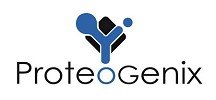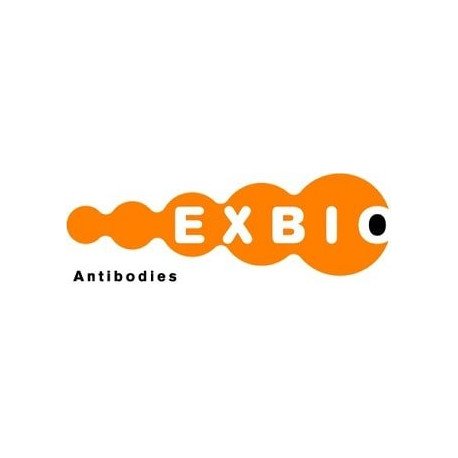Cart 0 Product Products (empty)
No products
To be determined Shipping
0,00 € Total
Prices are tax excluded
Product successfully added to your shopping cart
Quantity
Total
There are 0 items in your cart. There is 1 item in your cart.
Total products (tax excl.)
Total shipping (tax excl.) To be determined
Total (tax excl.)
Data sheet of Mouse Monoclonal to CD94
| Brand | Exbio |
| Product type | Primary antibodies |
| Reactivity | Human |
| Clonality | Monoclonal |
More info about Mouse Monoclonal to CD94
| Brand: | Exbio |
| Product no.: | 11-727-C025 |
| Product type: | Primary antibodies |
| Host species: | Mouse |
| Product name: | Mouse Monoclonal to CD94 |
| Antigen: | CD94 |
| Clonality: | Monoclonal |
| Clone: | HP-3D9 |
| Isotype: | IgG1 |
| Immunogen: | Cultured human NK cells |
| Format: | purified |
| Specificity: | The mouse monoclonal antibody HP-3D9 recognizes CD94, a 70 kDa type II transmembrane glycoprotein expressed on NK cells, NK-T cells, and subsets of CD8+ T cells and gamma/delta T cells._x000D_ HLDA V; WS Code NK82 |
| Categories: | CD and Related Antigens (Human) |
| Concentration: | 1 mg/ml |
| Storage buffer: | Phosphate buffered saline (PBS) with 15 mM sodium azide, approx. pH 7.4 |
| Storage / stability: | Store at 2-8°C. Do not freeze. Do not use after expiration date stamped on vial label. |
| Background: | CD94, also known as KLRD1 (killer cell lectin-like receptor D1), is a transmembrane glycoprotein of the C-type lectin family, which forms disulfide-linked heterodimers with NKG2A, B, C, E, H proteins, constituting functionally distinct receptors of NK cells and related cell types. CD94/NKG2A and CD94/NKG2B heterodimers serve as inhibitory, whereas CD94/NKG2C and CD94/NKG2E as activating receptors. The ligand for CD94/NKG2 complexes has been identified as HLA-E. Extent of CD94 expression on NK cell surface can be used to demonstrate their progress through the differentiation process. |
| Purity: | > 95% (by SDS-PAGE) |
| Purification: | Purified by protein-A affinity chromatography |
| Product specific references: | *Ntrivalas EI, Kwak-Kim JY, Gilman-Sachs A, Chung-Bang H, Ng SC, Beaman KD, Mantouvalos HP, Beer AE: Status of peripheral blood natural killer cells in women with recurrent spontaneous abortions and infertility of unknown aetiology. Hum Reprod. 2001 May;16(5):855-61., *Bovenschen HJ, Van De Kerkhof PC, Gerritsen WJ, Seyger MM: The role of lesional T cells in recalcitrant psoriasis during infliximab therapy. Eur J Dermatol. 2005 Nov-Dec;15(6):454-8., *Hallermalm K, Seki K, De Geer A, Motyka B, Bleackley RC, Jager MJ, Froelich CJ, Kiessling R, Levitsky V, Levitskaya J: Modulation of the tumor cell phenotype by IFN-gamma results in resistance of uveal melanoma cells to granule-mediated lysis by cytotoxic lymphocytes. J Immunol. 2008 Mar 15;180(6):3766-74., *Seo N, Tokura Y, Ishihara S, Takeoka Y, Tagawa S, Takigawa M: Disordered expression of inhibitory receptors on the NK1-type natural killer (NK) leukaemic cells from patients with hypersensitivity to mosquito bites. Clin Exp Immunol. 2000 Jun;120(3):413-9., *Phillips JH, Chang C, Mattson J, Gumperz JE, Parham P, Lanier LL: CD94 and a novel associated protein (94AP) form a NK cell receptor involved in the recognition of HLA-A, HLA-B, and HLA-C allotypes. Immunity. 1996 Aug;5(2):163-72., *Yu J, Mao HC, Wei M, Hughes T, Zhang J, Park IK, Liu S, McClory S, Marcucci G, Trotta R, Caligiuri MA: CD94 surface density identifies a functional intermediary between the CD56bright and CD56dim human NK-cell subsets. Blood. 2010 Jan 14;115(2):274-81, *Wada H, Matsumoto N, Maenaka K, Suzuki K, Yamamoto K: The inhibitory NK cell receptor CD94/NKG2A and the activating receptor CD94/NKG2C bind the top of HLA-E through mostly shared but partly distinct sets of HLA-E residues. Eur J Immunol. 2004 Jan;34(1):81-90., *Romero P, Ortega C, Palma A, Molina IJ, Peña J, SantamarÃa M: Expression of CD94 and NKG2 molecules on human CD4(+) T cells in response to CD3-mediated stimulation. J Leukoc Biol. 2001 Aug;70(2):219-24. |
| Related products: | - Mouse Monoclonal to CD98 - Mouse Monoclonal to CD95 / Fas - Mouse Monoclonal to CD97 |
| Shipping condition: | Room temperature |


